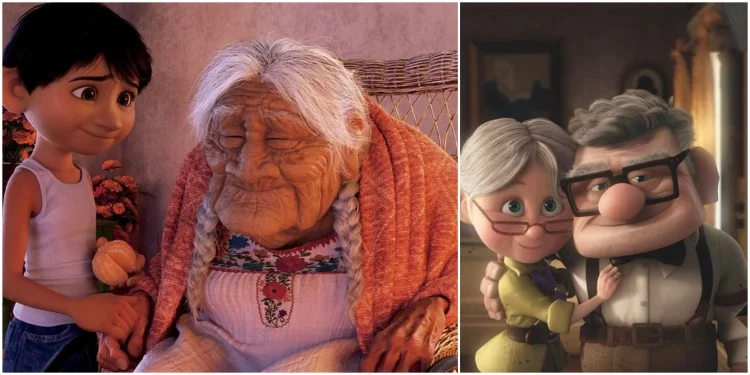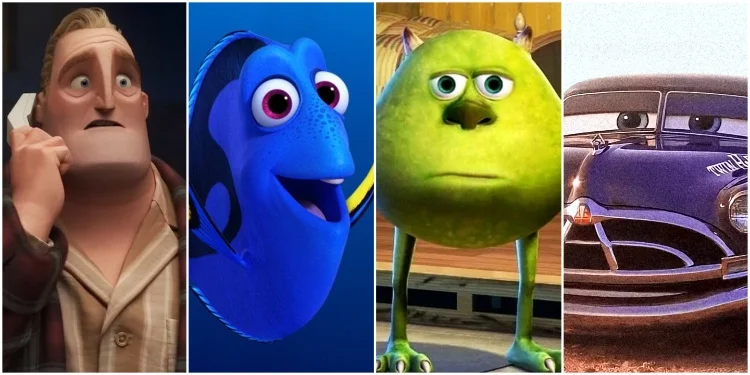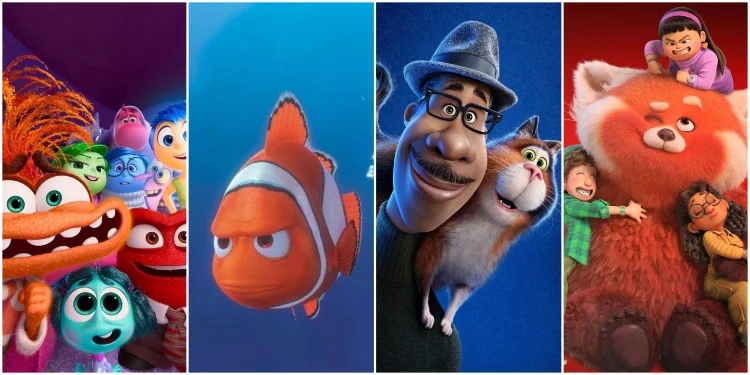Grab me a tissue, I’m about to watch a Pixar movie! When it comes to Pixar, every experienced moviegoer knows that it’s best to keep a few tissues handy. Renowned for its complex characters, revolutionary animation, and innovative plotlines, Pixar is also known for its ability to reduce the audience to tears. Unlike the usual light comedy or fun adventure, Pixar’s animated movies create a deeper, emotional impact on viewers. So, what exactly is it that makes these deepest Pixar movies such tearjerkers? In this article, we’ll break down everything from Pixar’s characters to its unique storytelling in an effort to understand how it’s able to get adults sobbing like babies by the time the credits roll.
A Brief Background: A Pixar Story

As everything does, Pixar began with a dream in 1974 as a small lab with four inspired engineers aspiring to create the world’s first computer-animated movie. Becoming an independent company in 1986, Pixar finally began to see its plan in motion. In 1995, that humble dream became reality with the release of its first feature film, a smash hit and instant classic, Toy Story. Proving that dreams indeed come true, Pixar pioneered CGI-animated films in the 90s and hasn’t looked back since.
Presently, Pixar Animation Studios has cemented its legacy as one of the world’s top animation studios. Widely praised by critics and fans for deeply emotional storytelling, the studio has accumulated multiple accolades over the years, including 23 Academy Awards, 10 Golden Globes, and 11 Grammy Awards. Pixar, often confused with Disney, has been a subsidiary of Walt Disney Studios since 2006. Pixar has recently found huge success with its latest movie Inside Out 2 which has become the second highest-grossing animated movie of all time. Having created only 28 feature films, Pixar boasts high-quality production with a consistent record of hit movies. Between 2007-2010 the studio ran a long streak, winning Best Animated Feature four times in a row at the Academy Awards. With hits like Finding Nemo, Wall-E, Up, The Incredibles, Coco, Toy Story, and more, Pixar films epitomize the phrase ‘movie magic’.
Pixar Characters That Touch the Soul

One of the biggest reasons why Pixar movies can wholly connect with their audience is because of the relatable characters the films feature. Pixar conscientiously creates complex personalities instead of simply quirky characters to engage the viewers. Each character is unique and faces their own internal struggles and issues, much like the real world. Through every new, relatable problem faced by the characters, Pixar is able to create a different and original narrative for each movie. As the lights go down and the screen lights up, the first thing that strikes you is the quality of the animation. Just a few minutes in and you’re already falling in love with the characters…
Woody from Toy Story, 1995
Pull-string cowboy doll Woody is a complex character. A passionate and loyal leader of all the other toys, Woody shows off an impeccable sense of responsibility. But everyone has their own flaws and Woody, being Andy’s favorite toy, faces relatable feelings of jealousy and fear when a new toy, Buzz Lightyear is introduced to the group. Woody’s masterfully written story of friendship and acceptance is extremely emotional and has given him an undeniable position as one of Pixar’s classic characters.
Mike Wazowski from Monsters Inc., 2001
Iconic Pixar character, Mike Wazowski is known for his nuanced personality. While seemingly selfish and egoistical, this lovable one-eyed green monster is still a fan favorite. Throughout the film, Mike shows loyalty and friendship even in the face of hardships. His witty remarks, practical thinking, and charm captured the attention of fans, making him not only a subject of praise but also a role model for his optimism and relatable character.
Deepest Pixar Movies: Dory from Finding Nemo, 2003
Dory, a blue tang fish who suffers from short-term memory loss, often causes frustration around her. Resonating with viewers suffering from loneliness and insecurity- usually, of their inability to socially interact- the instantly likable character immediately summoned an empathetic fanbase. The sting of others’ judgment and the feeling of cluelessness and incompetence are complex emotions symbolized by Dory’s character. Spawning a sequel called Finding Dory, Dory’s cheerfulness and buoyant attitude continue to inspire a wide audience.
Bob Parr or Mr. Incredible from The Incredibles, 2004
A typical example of why Pixar movies appeal to adults, Bob Parr stands for every tired and overworked adult who desires to break free of their pressuring work schedule and return to the wild days of their youth. His narrative of suddenly finding himself as a middle-aged man with a wife, three kids, and a boring job, is a story that many adults know all too well. As an ex-superhero longing to return back to the scene, Bob Parr’s incredible (sorry, another pun) character represents the complicated emotions of every unhappy adult working a 9 to 5 shift. Undoubtedly, Bob Parr still remains an important Pixar character to fans and critics alike.
Doc Hudson from Cars, 2006
Former champion and racing legend, Doc Hudson suffered an unfortunate fatal crash in the peak of his career forcing him into an early retirement. Bitter and grumpy, Hudson’s character connects with many sympathetic fans who understand the pain of accepting defeat. As Doc Hudson slowly realizes that his life is not over, his character arc from “crazy grandpa car” to a wise and attentive teacher inspires the audience to see that life goes on, no matter what. Pushing viewers to adopt a new perspective, every fan never forgets that sometimes to go left, you need to turn right.
Alfredo Linguini from Ratatouille, 2007

Rather than extraordinary, Ratatouille’s character Linguini feels extraordinary. Shadowed by their father’s exceptional success as a famous chef and weighted under his expectations, Linguini deals with real and relatable issues that every adult can understand. Clumsy and unable to fit in, Linguini’s character resonates with a wide audience.
Merida from Brave, 2012
An unconventional princess characterized by her flaming red hair and stout determination, Merida values her freedom above everything else. Refusing to get married to a prince, Merida longs to spend her time outdoors, chasing the wind and touching the sky. Striking a chord with young girls and even adults, Merida’s stark contrast to the usual perception of a princess made her an instant icon. Inspiring viewers to bravely take hold of their destiny and choose their own path, Merida is another Pixar classic character for a reason.
Deepest Pixar Movies: Sadness from Inside Out, 2015
Always dismissed or neglected by the other emotions, especially Joy, Sadness finds herself… well, sad. Her quiet, timid, and introverted personality has generated a large fanbase of those who struggle with their own unassertiveness. Prone to crying easily, she seems shadowed by Joy’s optimistic and bubbly personality. Breaking that assumption, Sadness’ character shows that even the shyest people can be loyal, smart, and brave. Throughout the movie, Sadness’ sensitivity and compassion reflect yet another Pixar masterpiece of a character.
Luca from Luca, 2021
Luca’s curiosity for a life beyond what’s familiar to him is familiar to many young adults. Navigating his parents’ opposition and his own ambition and motivation to fulfill his dreams, Luca proves to be a symbol for every person longing to leave the nest, whether it be to college or a job, amid parental anxiety. His fearlessness and spirited character have made him one of Pixar’s most recent role models.
Deepest Pixar Movies: Complexity of Plot

Here’s a Pixar movie for you: a real problem carefully wrapped in a thrilling and engaging fantasy adventure, drizzled with fun animation, sprinkled with humor and whimsy, complete with a side order of large-than-life creative settings to go.
Beyond simply creating entertainment for kids, Pixar engages adults with its subtly mature themes and complex emotions. As it takes you on an emotional rollercoaster ride, the experience of watching a Pixar movie is like no other. Pixar movies mirror real-life joys and adversities, reflecting trials and struggles people actually face in their lives. Everything, including the characters, animation, and story, serves as a vehicle to impart a higher understanding of the world and complex feelings.
Finding Nemo, 2003
Finding Nemo highlights issues of parental overprotection and loneliness. Letting a child go can be an extremely difficult and heart-wrenching task for parents, but after a point, every child needs their freedom. The movie also highlights the importance of moving on in life and enduring the struggles and problems we face.
“Just keep swimming. Just keep swimming. What do we do? Just keep swimming.”
Inside Out, 2014
Inside Out deals with the way our brain processes events and our emotional response to certain events. This film symbolizes the perseverance of human compassion and love even in periods of uncertainty and turmoil. The movie preaches that every emotion is important, including sadness, to navigate the ups and downs of life.
“Crying helps me slow down and obsess over the weight of life’s problems.”
Deepest Pixar Movies: Soul, 2020
Grappling with topics like existentialism, Soul grabs hold of one of the most important questions asked by humanity- what is the purpose of life? After an aspiring jazz musician fails to achieve his dream, he realizes that the true meaning of life is to find joy in its small moments. Instead of losing oneself chasing after an ever-elusive goal, the true purpose of life is to live it. “The zone is enjoyable. But when that joy becomes an obsession, one becomes disconnected from life.”
Turning Red, 2022
Speaking up about the complexity of adolescence and the dramatic changes children face upon becoming teenagers, Turning Red uses red pandas as a metaphor for puberty. The movie also highlights the struggles of upholding family traditions and culture and dealing with parental expectations. Puberty is an uncertain and even scary period for many kids, and this film attempts to help desensitize the topic among its audience. Helping kids embrace themselves, the movie sends an important message about self-acceptance to kids. “We’ve all got an inner beast. We’ve all got a messy, loud, weird part of ourselves hidden away. And a lot of us never let it out. But I did. How about you?”
Touching the hearts of adults, the deepest Pixar movies remind them of a lost childish innocence while subtly imparting an impactful message. A perfect combination of deeply emotional narratives, powerful values, and relatable characters completes the science of how Pixar is able to every adult tear up. So next time we’re dabbing at our wet eyes because of yet another Pixar magnum opus, we’ll know. Until then, may every Pixar fan soar high… To infinity and beyond!








